
The mutiny on the Royal Navy vessel HMS Bounty occurred in the South Pacific Ocean on 28 April 1789. Disaffected crewmen, led by acting-Lieutenant Fletcher Christian, seized control of the ship from their captain, Lieutenant William Bligh, and set him and eighteen loyalists adrift in the ship's open launch. The mutineers variously settled on Tahiti or on Pitcairn Island. Bligh navigated more than 3,500 nautical miles in the launch to reach safety and began the process of bringing the mutineers to justice.

The ship of fools is an allegory, originating from Book VI of Plato's Republic, about a ship with a dysfunctional crew. The allegory is intended to represent the problems of governance prevailing in a political system not based on expert knowledge.

Bartholomew Roberts, born John Roberts, was a Welsh pirate who was, measured by vessels captured, the most successful pirate of the Golden Age of Piracy. During his piratical career, he took over 470 prize ships. Roberts raided ships off the Americas and the West African coast between 1719 and 1722; he is also noted for creating his own pirate code, and adopting an early variant of the Skull and Crossbones flag.
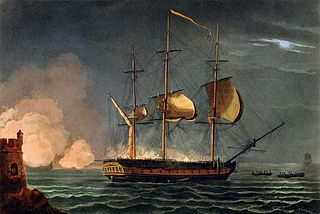
HMS Hermione was the lead ship of the Hermione-class, a six-ship class of 32-gun fifth-rate frigates of the Royal Navy. She was launched on 9 September 1782 at Bristol. Hermione was commissioned and then paid off a number of times during the 1780s. She underwent repairs between October 1790 and June 1792, followed by a period spent refitting at Chatham Dockyard until January 1793. She was recommissioned in December 1792 before sailing to the Jamaica in March 1793. Hermione served in the West Indies during the early years of the French Revolutionary Wars, participating in the British attack on Port-au-Prince, where she led a small squadron that accompanied troop transports.
Seafaring is a tradition that encompasses a variety of professions and ranks. Each of these roles carries unique responsibilities that are integral to the successful operation of a seafaring vessel. A ship's crew can generally be divided into four main categories: the deck department, the engineering department, the steward's department, and other. The reasoning behind this is that a ship's bridge, filled with sophisticated navigational equipment, requires skills differing from those used on deck operations – such as berthing, cargo and/or military devices – which in turn requires skills different from those used in a ship's engine room and propulsion, and so on.

The Black Pearl is a fictional ship in the Pirates of the Caribbean film series. In the screenplay, the ship is easily recognized by her distinctive black hull and sails. Captained by Captain Jack Sparrow, the Black Pearl is said to be "nigh uncatchable". In the first three films, she either overtakes or flees all other ships, including both the Interceptor, which is regarded as the fastest ship in the Caribbean, and the Flying Dutchman, which is faster than the wind. Her speed is derived from several factors such as the large number of sails she carries and being partly supernatural. As stated in Dead Man's Chest and At World's End, the Black Pearl is "the only ship that can outrun the Dutchman" and this is evidenced in the maelstrom battle between the two ships in the movies.
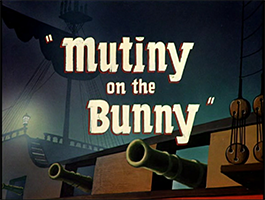
Mutiny on the Bunny is a 1950 Warner Bros. Looney Tunes cartoon directed by Friz Freleng. The short was released on February 11, 1950, and stars Bugs Bunny and Yosemite Sam.

The Caine Mutiny is a 1952 Pulitzer Prize-winning novel by Herman Wouk. The novel grew out of Wouk's personal experiences aboard two destroyer-minesweepers in the Pacific Theater in World War II. Among its themes, it deals with the moral and ethical decisions made at sea by ship captains and other officers. The mutiny of the title is legalistic, not violent, and takes place during Typhoon Cobra, in December 1944. The court-martial that results provides the dramatic climax to the plot.
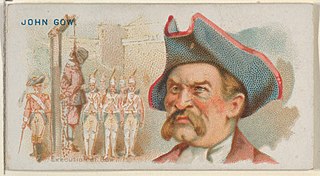
John Gow was a notorious pirate whose short career was immortalised by Charles Johnson in the 1725 work The History and Lives of All the Most Notorious Pirates and Their Crews. Little is known of his life, except from an account by Daniel Defoe, which is often considered unreliable, the report on his execution, and an account by Mr. Alan Fea, descendant of his captor, published in 1912, almost two centuries after his death.

The Survivors of the Chancellor: Diary of J. R. Kazallon, Passenger is an 1875 novel written by Jules Verne about the final voyage of a British sailing ship, the Chancellor, told from the perspective of one of its passengers.

In the Vlieter incident on 30 August 1799, a squadron of the Batavian Navy, commanded by Rear-Admiral Samuel Story, surrendered to the British navy. The incident occurred during the Anglo-Russian invasion of Holland. It occurred in the tidal trench between Texel and the mainland that was known as De Vlieter, near Wieringen.

The United States Navy occupational rating of boatswain's mate is a designation given by the Bureau of Naval Personnel (BUPERS) to enlisted members who were rated or "striking" for the rating as a deck seaman. The colloquial form of address for a boatswain's mate is "Boats".
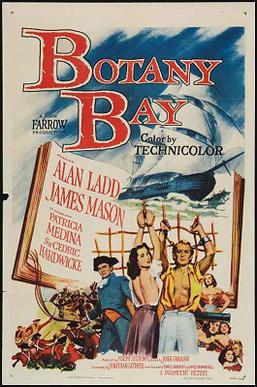
Botany Bay is a 1953 American adventure film directed by John Farrow and starring Alan Ladd, James Mason and Patricia Medina. It was based on a novel of the same name by Charles Nordhoff and James Norman Hall.
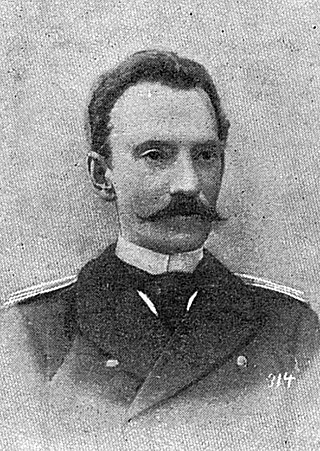
Ippolit Giliarovsky was the second in command as a frigate captain of the battleship Potemkin during the mutiny. He held key responsibility for the uprising due to his brutal treatment of the sailors. Giliarovsky was killed during the mutiny.
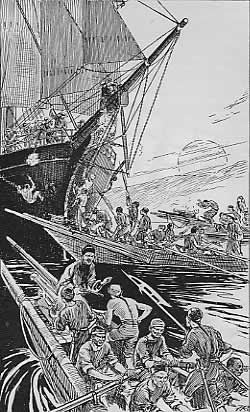
The North Star affair occurred in May 1861 when Chinese pirates attacked the British merchant ship North Star. Several men were killed in the incident, including a Royal Navy officer. The pirates escaped capture with 4,000 dollars' worth of gold.

A slave mutiny on Meermin, one of the Dutch East India Company's fleet of slave ships, took place in February 1766 and lasted for three weeks. Her final voyage was cut short by the mutiny of the Malagasy captives onboard, who had been sold to Dutch East India Company officials on Madagascar to be enslaved by the company in its Cape Colony in southern Africa. During the mutiny half the ship's crew and almost 30 Malagasy captives died.
Saladin was a British barque that made voyages between Britain and the coast of Peru, carrying shipments of guano. The ship is best known for its demise in an act of mutiny, murder and piracy which began with the murder of its captain and officers and ended with the ship being stranded off the coast of Nova Scotia on 21 May 1844, followed by the last major piracy trial in Canada.

Jacque Alexander Tardy better known as "Tardy the Pirate", was an unsuccessful and atypical pirate who usually poisoned his victims. Most known for his last act of piracy of the brig Crawford. He wore a blue velvet frock coat, carried a cane and was small of stature with fine features and a dark complexion. At the time of his death he had grey hair and wore dentures.

The Somers Affair was incident on board the American brig USS Somers while on a training mission in 1842 under Captain Alexander Slidell Mackenzie (1803-1848). Midshipman Philip Spencer (1823-1842) was accused of plotting a mutiny that would kill those who opposed him and then use the Somers as a very fast, well-armed pirate ship. Spencer was arrested and executed, along with two other alleged co-conspirators, Samuel Cromwell and Elisha Small, when the Somers was thirteen days away from shore. The three were hanged without a court-martial following a hastily assembled shipboard meeting. The ship then returned to New York. An inquiry and a court martial both cleared Mackenzie. There was enormous public attention, most of it unfavourable to Mackenzie.
Nautical operations refers to the crew operation of a ship. It is the term used in academic education to refer to the studies of this professional field. Nautical operations refers to all the operational procedures, specific roles of officers and crew members, and regular functions and technical processes, which together shape the structure and functions for the general operations of a ship.















